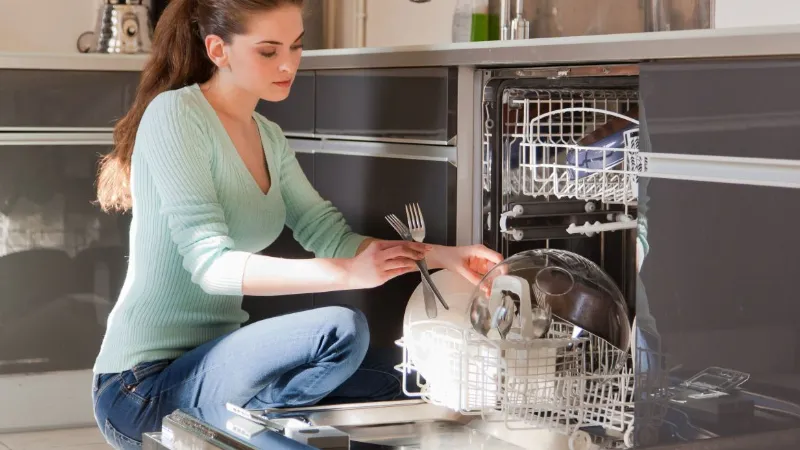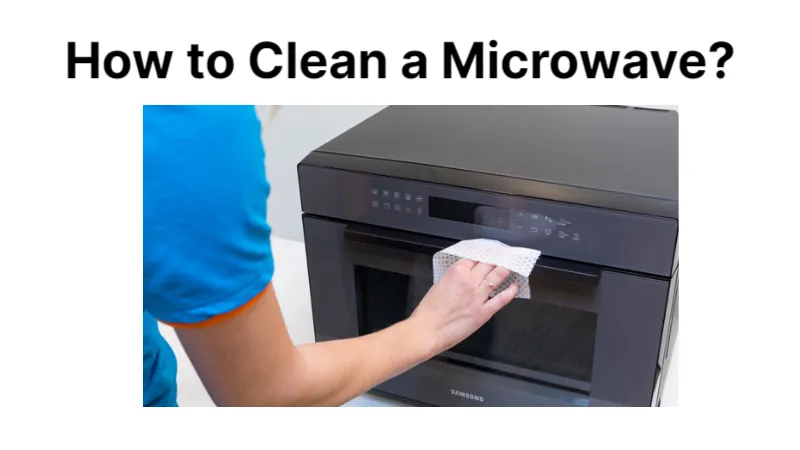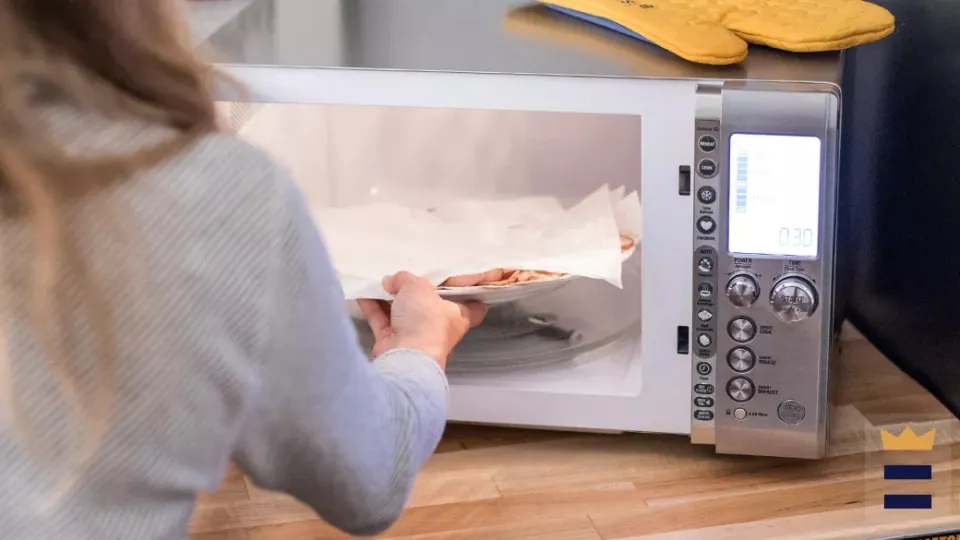How to drain a dishwasher manually? We’ll go over how to inspect the various parts of your dishwasher, find the issue, and fix it yourself in this article. If you’re prepared to restore your dishwasher to its original state, continue reading!
How to drain a dishwasher manually? Manually remove the water, run the garbage disposal, check the drain filter, clear the air gap, disconnect the drain hose, clear the clog, reconnect the hose, test the clog, and call in the pros.
To learn more, keep reading.
Things You Should Know
- Discard the dishes and turn off the electricity. Then, use towels to absorb the standing water inside the dishwasher so you can access the parts.
- To remove food residue and buildup, remove the filter and clean it with warm, soapy water.
- For kinks and obstructions, inspect the drain hose. If the drain hose looks damaged, you may need to replace it.
Nobody would be critical of you if you assumed that a dishwasher uses a sizable amount of water for each load. After all, one of the largest appliances in your home is usually this one. You may have wondered how much water does a dishwasher use.
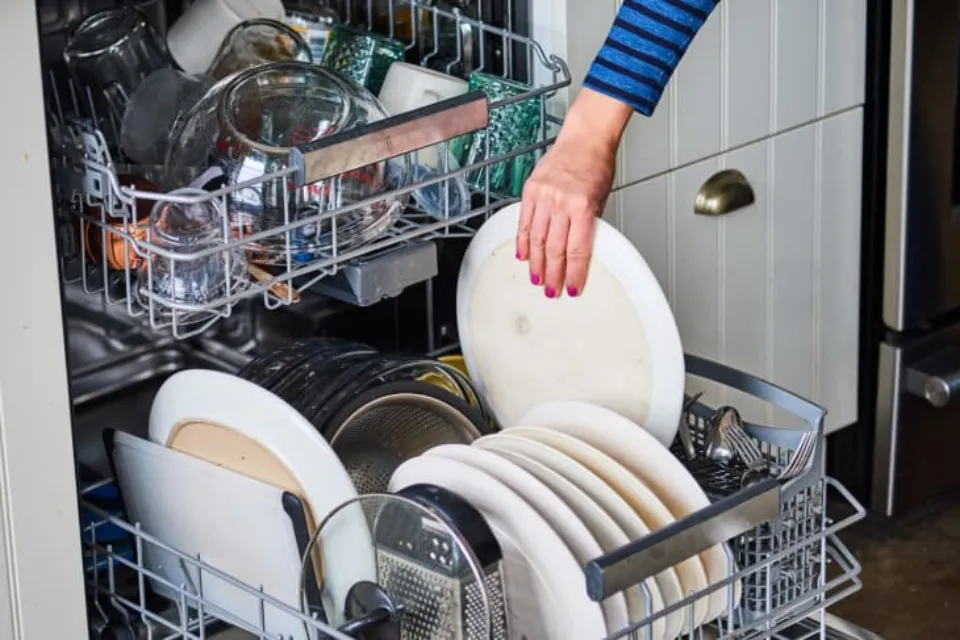
What You’ll Need:
Tools
- Wire bottle brush
- Wire clothes hanger
- Pliers
- Towels
- Bucket
- Dish gloves
It’s never a pretty sight when you open the dishwasher after a cycle and discover a pool of sudsy, discolored water at the bottom. Before you get on the phone with a plumber, remember that learning how to drain a dishwasher is a doable once you are familiar with the system, a do-it-yourself project. You may even be able to find out why your dishwasher isn’t draining in the first place. Let’s take a look.
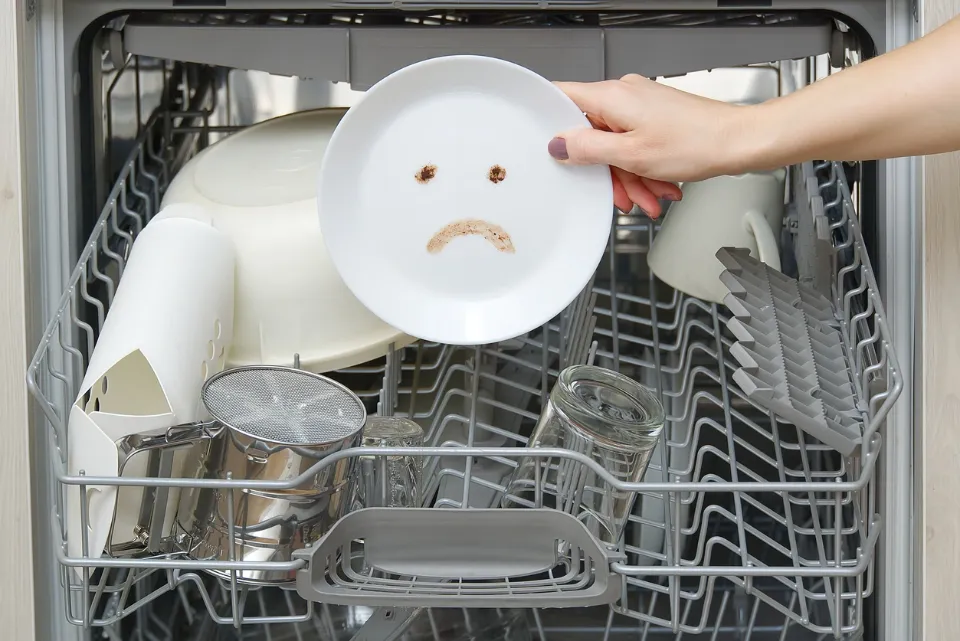
Prepping to Drain a Dishwasher
There is always the possibility that your dishwasher stopped in the middle of a cycle, for example, if someone attempted to open the door or there was a brief power outage. To reactivate the drain mechanism in this situation, press and hold the cancel button on your control panel for at least three seconds.
To manually drain the dishwasher if this doesn’t work, turn off the power to it. Check the cabinet next to the dishwasher or the area under your sink for the outlet. Cut off the power to your kitchen area’s circuit breaker if the outlet is not reachable.
Manually Remove the Water
Before attempting to find the cause of the problem, it is crucial to manually drain your dishwasher. There is no way to force water through a clogged drain hose. Begin by scoping out the water with a cup and mopping up the rest of the water with a sponge or cloth. Eventually, the drain filter at the base of your dishwasher ought to be visible and reachable.
Run the Garbage Disposal
Water may not drain out of the dishwasher properly due to a full garbage disposal or an air gap in a connecting hose. The problem might be resolved by simply running the disposal for about 30 seconds.
Check the Drain Filter
Did you know your dishwasher has a filter at the bottom that can be cleaned? Access the removable filter in the center by slipping off the lower dish rack. You should be able to remove the filter basket from the machine by turning it counterclockwise, though each model is different. Look for any large food pieces or grease buildup in the basket and surrounding filters.
Suggested reading: Even though Vans shoes are built to withstand the abuse of skateparks, they occasionally need some tender loving care. Here’s the question, can you put vans in the washing machine?
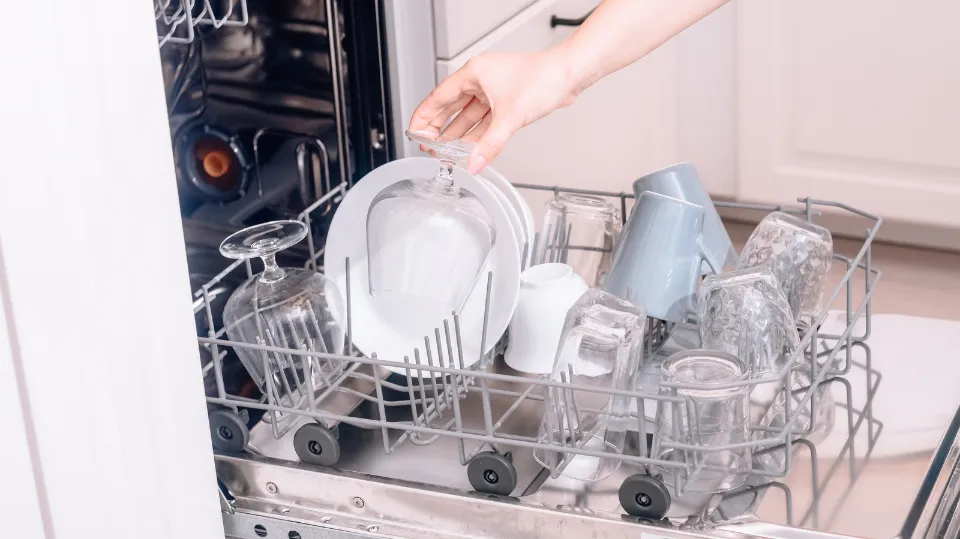
Clear the Air Gap
Examine the air gap if your drain filter is clear. The air gap is located above your sink, next to the faucet. It could have the appearance of a soap dispenser or a tiny metal cap. By releasing air pressure in the dishwasher hose connection, this mechanism also prevents re-entry of dirty water into the dishwasher.
Air gaps are not present in all dishwasher configurations. Some states don’t require an air gap device as long as you have a high-mounted loop in the drain hose. If you don’t have one, move on to the next step.
When checking for debris, food, or grease buildup in an air gap, turn the top of the air gap counterclockwise. Checking the pipe for obstructions can also be done with a bottle brush.
Disconnect the Drain Hose
Clogs or problems with your drain hose are the most typical causes of dishwasher drainage problems. The drain hose can be found attached to your garbage disposal, the air gap, or the drainage pipe under your sink.
Begin by placing a towel and bucket underneath your drain hose in case water trapped in the hose comes out when disconnected. The hose should then be examined for any exterior kinks or objects that may have been pressing against it.
Disconnect the drain hose from the air gap, garbage disposal, or drain pipe in your sink if everything appears to be in order. To release the clamp on the pipe’s exterior, you might require a pair of pliers or a flathead screwdriver. Before disconnecting the connection, we advise taking a picture of it.
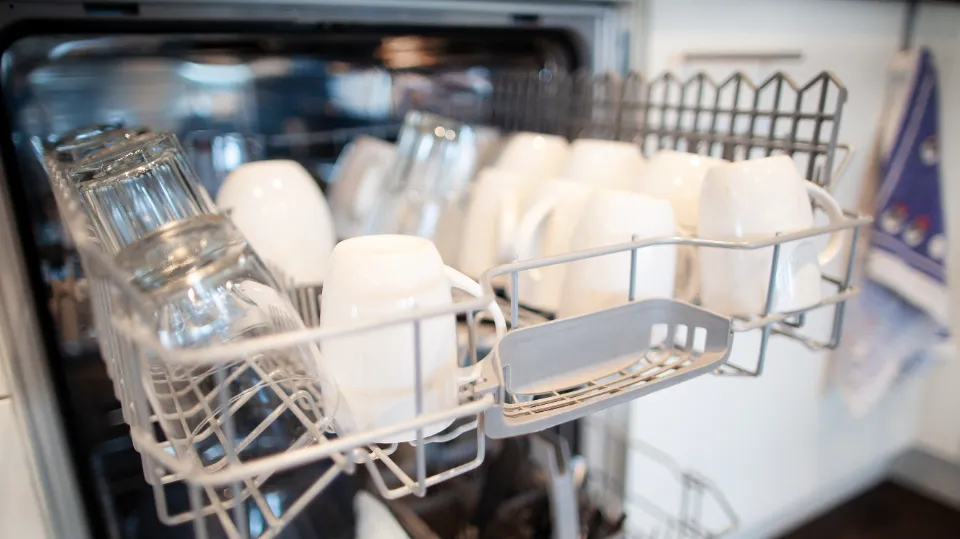
Clear the Clog
Try shaking the debris free by placing the hose’s open end in the bucket. Use a bottle brush or a straightened wire hanger to fish out any potential obstructions if nothing shows up. To prevent damaging the tube, use caution when handling the hanger’s end.
Reconnect the Hose
Utilizing the earlier photograph to make sure the clamp is properly sealed, reattach the hose to its original location.
Test the Clog
At this point, turn the circuit breaker back on and run the dishwasher for a while. The draining mechanism will start working once you press and hold the cancel button for at least three seconds, or the time specified. Check the inside of the appliance for standing water after the dishwasher has finished draining and has shut off.
Call in the Pros
If clearing your drain hose, air gap, garbage disposal, and drain filter still doesn’t clear the clog, it’s time to call a plumber or an appliance repair specialist. A burnt-out circuit, a clogged dishwasher pump, or a problem with the float are examples of more complicated problems that could exist.
Suggested reading: How long do dishwashers last? This guide will tell you how to prolong the life of your dishwasher and keep it in good working condition.
DIY Draining a Dishwasher Vs. Hiring a Pro
Professional dishwasher repair costs between $160 and $300 on average, depending on the extent of the repair. Dishwasher pump replacement, for example, costs between $150 to $350, while a new filter runs between $50 and $100. If you’re hiring a pro to diagnose the issue, hourly rates range from $75 to $100.
Before contacting a dishwasher repair expert, you could eliminate the cause of a clog or problem by using the methods described above for how to drain water from a dishwasher. Sometimes all it takes is a quick reset or clearing out an obvious clog, and it won’t even cost you a penny.
The kind of crocs you own will affect how you should wash them. Can you put crocs in the washing machine? To avoid damaging your crocs when washing them, you should first read this post.
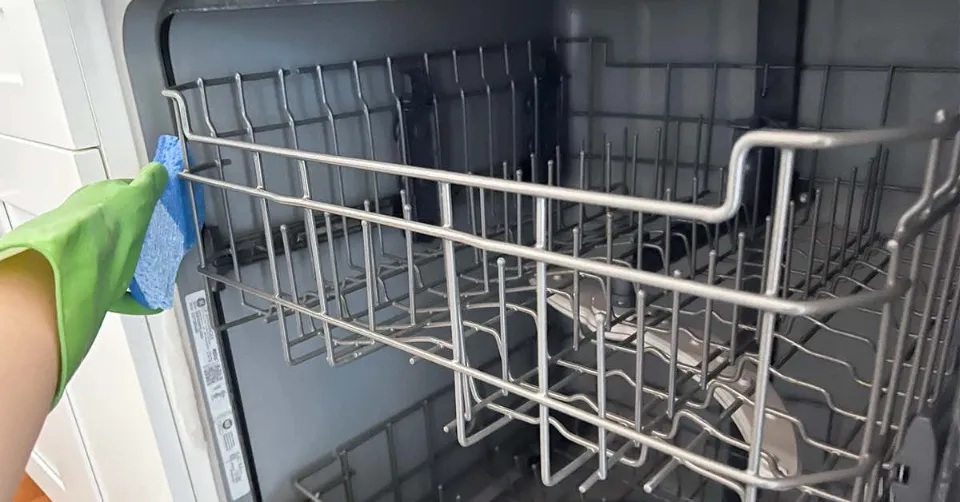
FAQs
Is There a Dishwasher Drain Button?
Most dishwashers have a “Cancel” or “Drain” button or option. Sometimes this will be two buttons pressed at the same time, which should be noted on the control.
Should I Run My Dishwasher If It Has Standing Water?
Anywhere around 1 cup of water leftover after a cycle is normal. Your dishwasher will immediately pump it out before you begin working on a new load because it is there to prevent the seals from drying out. However, if there is significantly more than 1 cup, there might be a deeper issue, such as a damaged motor.
Why is My Dishwasher Not Draining?
Your dishwasher won’t drain for a number of reasons. The most common source of clogs comes from a blockage in the dishwasher’s filter. Your dishwasher could also become clogged due to a problem with the air gap, drain valve, drain hose, or even your garbage disposal.
Can You Direct Drain a Dishwasher?
Any domestic dishwashing machine must have an approved dishwasher airgap fitting on the discharge side before being directly connected to a drainage system or food waste disposal device.
Summary: How to Drain a Dishwasher?
If you need to clear standing water at the bottom of a dishwasher, here’s how to drain it:
- Line the floor under the dishwasher with towels or newspaper.
- Scoop the liquid from the bottom into a bowl or the sink using a measuring cup or a big ladle.
- The remaining moisture should be absorbed with cloth or paper towels once the water becomes too shallow to scoop.
To prevent clogging the drain, always use the proper type of dish detergent as directed by the manufacturer. You can prevent future drainage problems by taking some preventative measures to keep your dishwasher operating efficiently.
If you have any questions, please leave a comment. My Prime Home tries to give you the best home improvement information. Don’t forget to share the post. Thank you for reading.
You may want to know:
